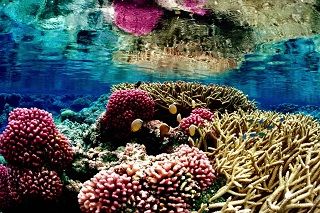OTEC and Carbon Sequestration

The hot layer at the top of a tropical ocean tends to lock the mineral/nutrient-rich water below a thermocline, i.e., a thermal “front” or boundary. If we can bring that to the surface (which would happen via the cold-water pipe during the OTEC process), we would mimic what happens in natural up-wellings, e.g, the coast of Peru, where there is 100 times more biological activity than there is on average at the surface of the ocean.
Obviously, this promotes CO2 sequestration, in the form of plant life, and the creation of small critters with carbonate shells. When the critters die, bacteria eat the hydrocarbons, but what’s left sinks to the bottom of the ocean and is subducted under tectonic plates. That’s the good news. The bad news is that the nutrients (N, P, Fe, Ca, etc.) in this cold water have the potential to create blooms of toxic algae, and, more to the point, to be a net releaser of CO2, if, for example, we bring up water from very deep places where the calcium carbonate disassociates.
As OTEC matures, we have to figure all this stuff out, and make sure we’re sequestering—or at least not releasing CO2.
